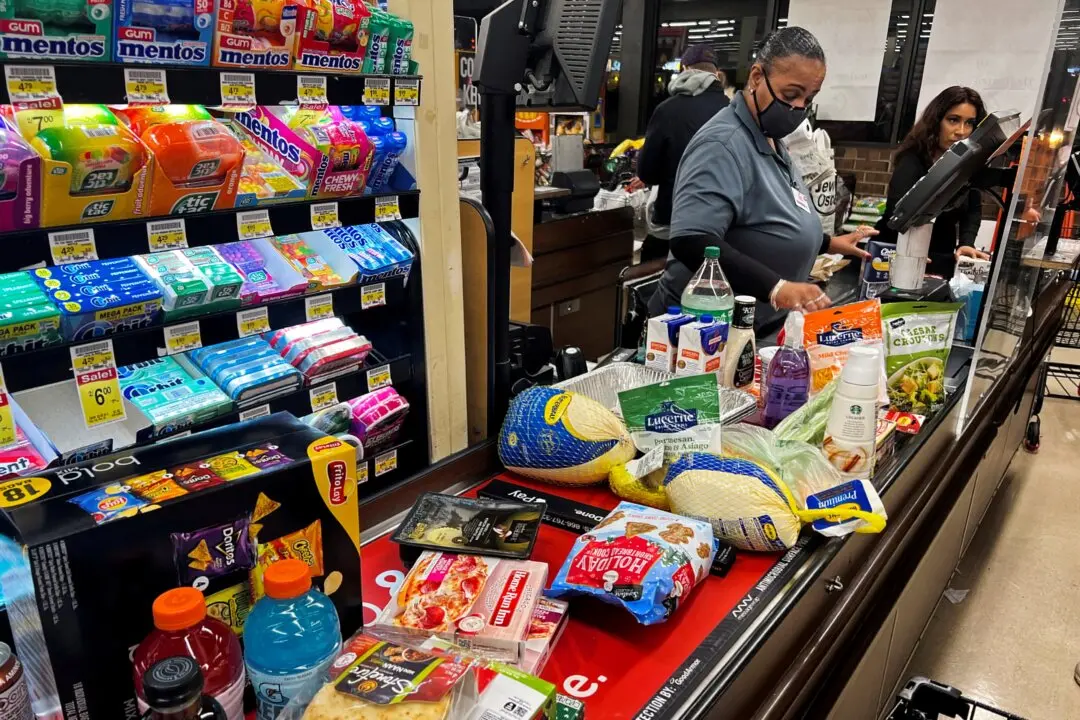
December saw an increase in inflation from 3.1% to 3.4%, indicating that the Federal Reserve will need to keep pushing for a 2% consumer price rise.
3.2% was expected to be the reading.
Inflation every month was 0.3%, while core inflation—which deducts the volatile costs of food and energy—was 3.9%, which was lower than November’s figure of 4% but more than anticipated at 3.8%.
Even while many people may not see a significant change in the economy, some are beginning to feel better about it.
However, 2023 saw a notable drop in price increase following two years of very high inflation that drove up the price of necessities.
In November 2022, the 12-month rate of inflation was 3.1%, down from a peak of 9% in the summer of 2022. According to economists’ predictions, the rate would not have changed in December. The most recent statistics will be released by the Bureau of Labour Statistics on Thursday at 8:30 a.m.
The rate will remain higher than the 2% inflation objective set by the Federal Reserve. Furthermore, the reality that prices aren’t truly down indicates that customers’ shock from the previous 24 months is still wearing off.
The good news, according to Bankrate’s senior financial analyst and vice president Greg McBride, is that the rate of inflation has been gradually declining and getting closer to the final target of 2%. “The bad news is that just because prices aren’t rising as quickly doesn’t mean they’re falling.”
Food consumed at home and energy costs, two of the areas that have the biggest impact on consumers, have had more marked slowdowns in price increases than many other categories, according to McBride. Food price rise dropped to 1.7% in November 2022 from a peak of 13.5% in August 2022.
Additionally, petrol costs have dropped to under $3 per gallon from an average of nearly $5 in June 2022.
Although those two categories saw a sharp price increase in 2021 as a result of Russia’s invasion of Ukraine, McBride indicated that this pattern is expected to continue, with their price rise slowing down due to a general decrease in economic development. This week, the World Bank revealed its prediction for the global gross domestic product, which was 2.6% in 2023, 3.0% in 2022, and 6.2% in 2021, to only 2.4% this year.
However, regular prices for customers remain higher than they were before the epidemic. Based on BLS statistics, the price of a pound of white bread in the winter of 2019–20 was around $1.30. It currently costs roughly $2. Over the same period, the price of ground beef went from around $3.87 to $5.35 per pound. And the price of milk has increased from approximately $3.20 to almost $4 per gallon.
Customers are thus still getting used to the new normal even when the price rise slows down.

“The general state of consumer sentiment remains low,” stated Matt Bush, the U.S. economist at Guggenheim Partners. “Although the rate of inflation is decreasing, the overall amount is still very high, and consumers are still dissatisfied with the current state of prices.”
Since wage growth has outpaced inflation, there are indications that consumer mood is gradually improving.
In the last month of the previous year, consumer confidence surged to its highest point since July. Employers created 216,000 jobs in December, significantly more than anticipated, according to data released on Friday. This shows that the labor market is still strong even as it cools down.
In light of this, some economists interpret even potentially alarming trends—such as consumers’ mounting debt loads—as an indication that, as pricing pressures lessen, people are beginning to feel a little more upbeat.
“They anticipate making more money, so they’re taking on more debt,” stated Joe Brusuelas, chief economist at RSM Consulting. Figures on consumer debt don’t often tell the whole story, he added, partly because wealthy Americans tend to borrow more money and pay it back faster. However, despite rising interest rates on credit cards, mortgages, and vehicle loans, many consumers “can pay that debt back.”
“It’s an expression of confidence in many ways,” he continued.
According to Moody’s chief economist Mark Zandi, wage growth should remain higher than inflation even if it slows down.
That translates into tangible, if modest, gains for customers.
“With each passing month, it gets a teeny bit better,” Zandi stated. “In terms of people’s responses, there’s a slightly brighter hue,” he went on. The perception that salaries are rising faster than inflation and that buying power is increasing is a process rather than an event. That is the situation, but persuading people that it is true and sustainable will take time.”
